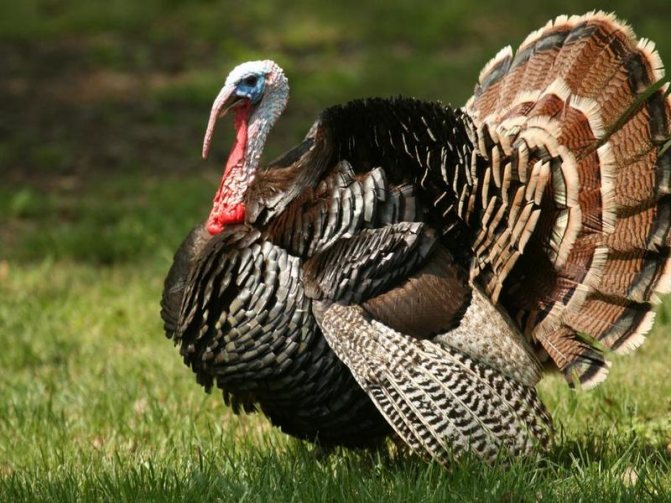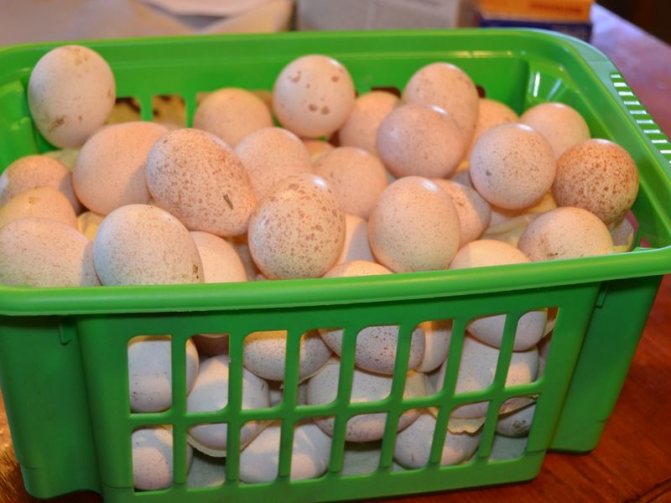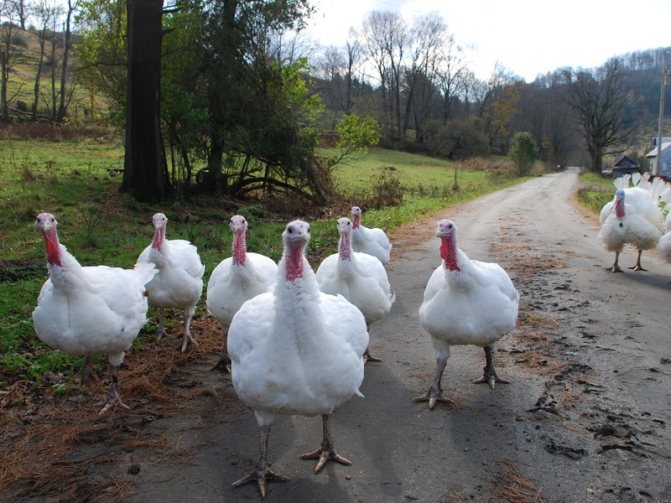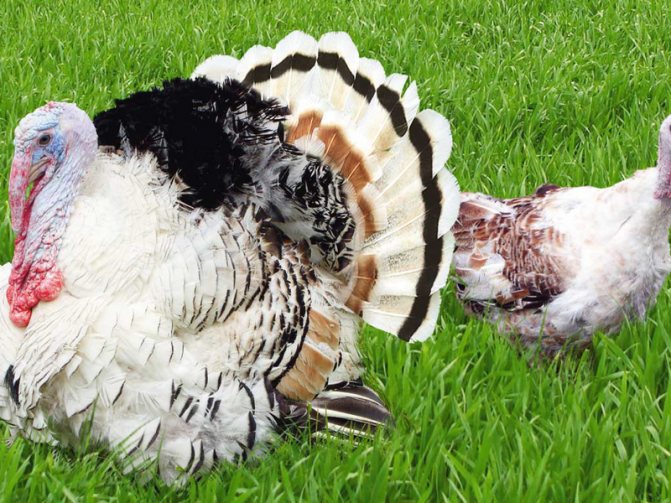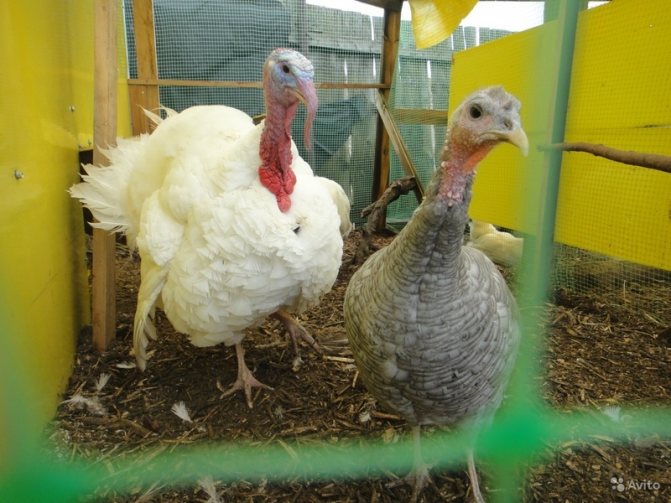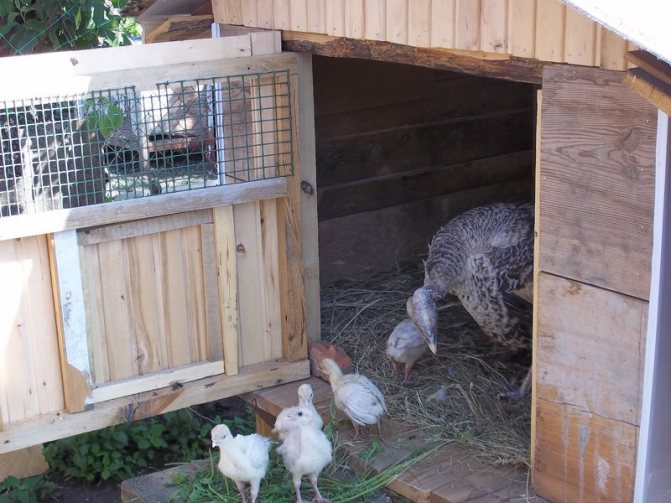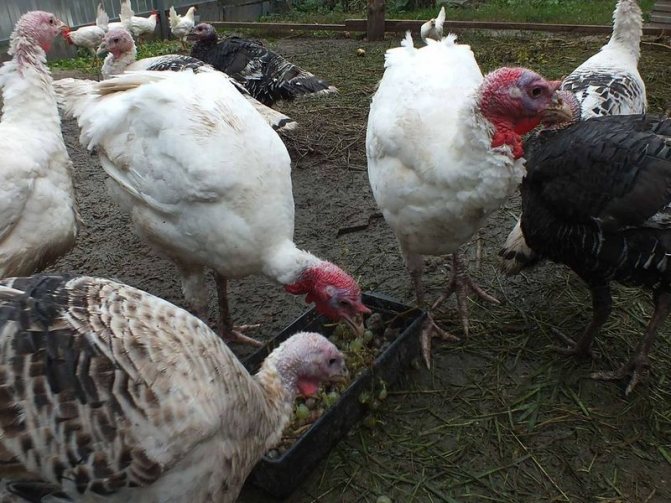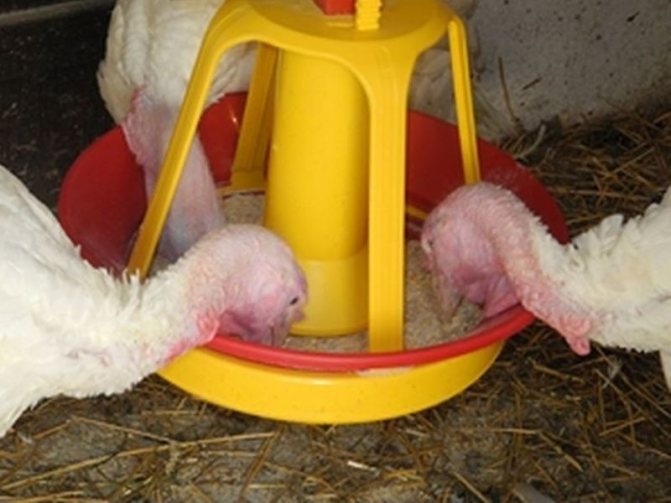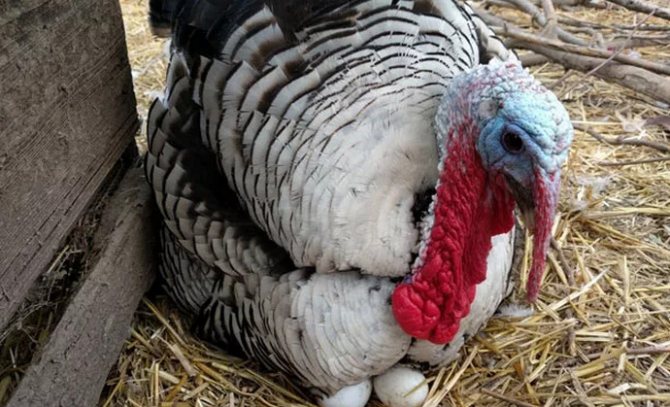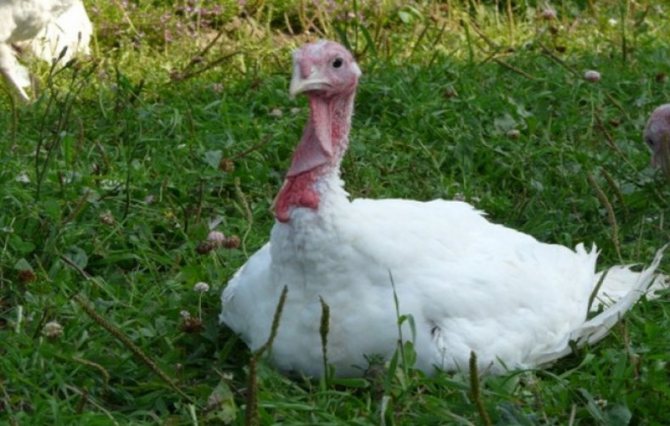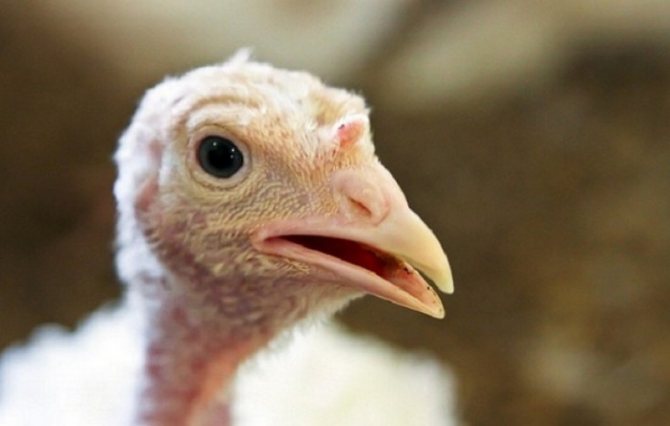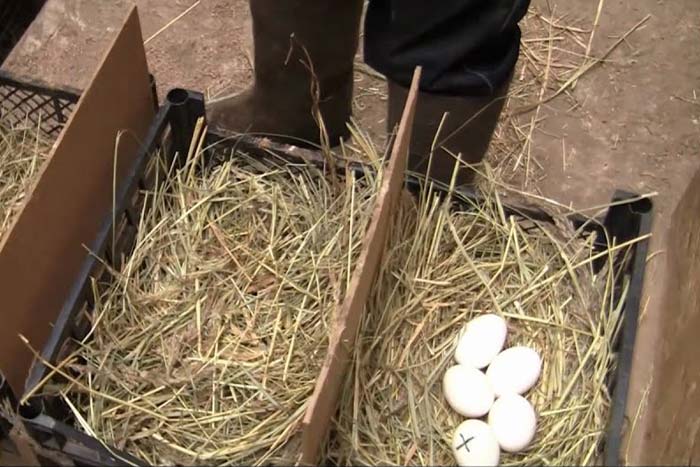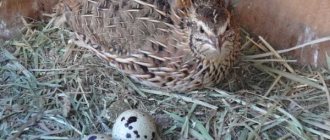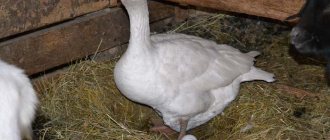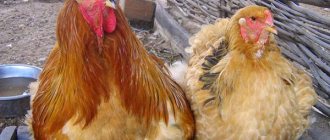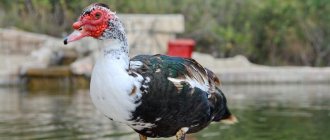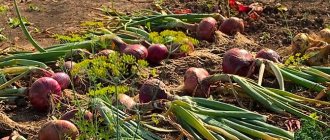Podvorts that contain turkeys are recommended to immediately divide the young by gender. This is done in order to regulate the period of puberty in birds and to control the mating of individuals. The first eggs that a turkey brings are eaten. They are canteens. To obtain fertilized eggs, they create a bird family.
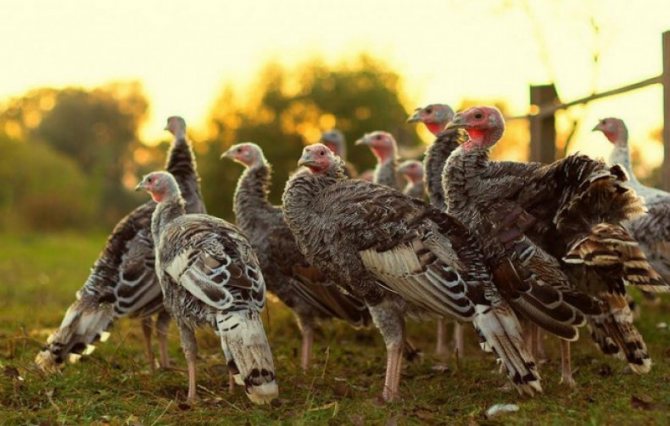
How do you rate your level in animal husbandry?
- Newbie (56%, 6 975 Votes)
- I know the basics, but I want to know more (36%, 4 467 Votes)
- Livestock Guru (8%, 1,040 Votes)
Total Voters: 12 482
It can consist of 7 females and 1 male. For incubation, spring clutches are collected so that the chicks appear in the warm season. To control egg production in turkeys, courtyards need to know when they start to lay. At what age do females lay eggs? How long does productivity last? What determines the quality of the masonry?
Age of puberty for turkeys
The term of sexual maturity of turkeys depends on the breed, heredity, weight category, conditions of keeping and health of the bird. Most often, turkeys begin to lay at the age of 7 to 9 months. Large birds lay their first eggs at 32–36 weeks of life, and small birds - at 28–30 weeks.
When keeping turkeys at home, you can find out that they are ready to rush by the following signs:
- The female rushes about and looks for a secluded corner, into which she begins to pull down fluff, leaves and branches.
- The hen does not go out for a walk in the morning.
- The turkey is hiding from the flock and cannot be seen in the house or yard. Most likely, she is equipping a nest somewhere.
Most often, turkeys begin to lay in early March and end in April. The next stage of egg laying occurs in autumn. At home, turkey eggs can be obtained in the spring and autumn.
In industrial turkey breeding, the bird rushes all year round. There, the egg production of turkeys does not depend on the season, weather and climate. Young turkeys show the highest egg production. When the bird reaches the age of two, the egg production rate falls.
Experienced farmers install additional artificial lighting in the house to induce earlier egg-laying. Molting and egg-laying can be reduced by artificially reducing the length of the day.
Every poultry breeder should know that it is possible to extend daylight hours only after the turkeys and turkeys are eight months old. If you increase the amount of light when the birds have not yet reached sexual maturity, then you can get an early clutch, but the quality of the offspring will be low and productivity in the future will decrease.
Turkeys
At what age do turkeys begin to lay eggs
The period of puberty depends on various factors: breed, heredity, weight, content and immunity.
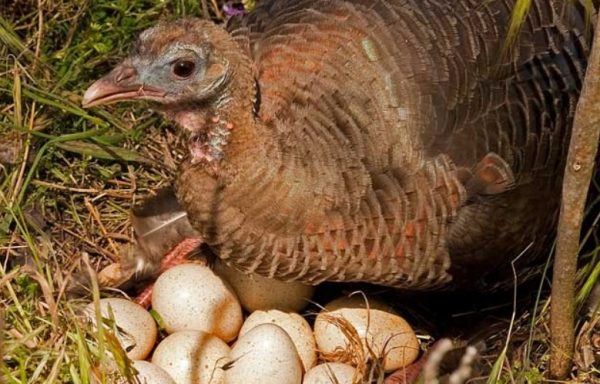

In theory, turkeys lay eggs for the first time at 7-9 months.
In theory, turkeys lay eggs for the first time at 7-9 months. If the bird is large, then for the first time makes the first clutch at 32-36 weeks, small - 28-30 weeks.
In practice, the situation is different: birds are capable of hatching eggs even at 5-6 months.
It has been scientifically proven that early maturity is a hereditary trait, while it is more influenced by the male. In this regard, you can increase productivity by choosing suitable turkeys for mating.
Egg production of turkeys
To obtain eggs from a turkey and to successfully breed offspring, you will need one male for ten females. The turkey must be one month older than the turkeys. During mating, the male behaves quite aggressively, therefore, so that he does not injure his partner, his claws are cut off. Fertilization of a turkey usually occurs the first time.
In the first days of clutch, one egg can be obtained from a laying hen in a few days. After a while, the turkeys are rushed every other day or once a day. The weight of each turkey egg is about 70-80 grams. The turkey egg itself has a light beige color and brown blotches, and its shell is speckled.
What egg production at home a laying hen will have in a year depends on many indicators. These include:
- Weight and breed of the bird.
- Turkeys run better in the spring than in the fall.
- The hen should live in peace and quiet, otherwise it can be frightened away.
- Dampness and cold are badly reflected on turkey egg-laying. Keep the house dry and warm at all times.
- Daylight hours should be at least ten hours a day.
- The quality and quantity of feed consumed.
When all the conditions necessary for keeping the birds are met, the laying hen's egg production reaches 120–150 eggs per year. Young females give small testicles, but in larger numbers. As the turkey ages, the egg weight increases, however, it is laid less often. Poorly affects egg production and molting period.
The eggs obtained from the female must be collected and stored at home at temperatures from +13 to +18 degrees for no more than ten days. Once there are 11 to 20 turkey eggs, they will need to be placed under the hen.
Despite the fact that turkeys are very good hens, some of them categorically refuse to hatch eggs. Turkeys may refuse to perch for several reasons:
- experienced stress;
- health problems;
- unwillingness to get used to a new nest;
- poor living conditions and food.
What to do in this case and can you use turkeys as a brood hen? If there are not enough females, many farmers use turkeys to hatch eggs. The male is placed in the nest on the egg and covered with a basket. After a few days, the basket is removed, and if the turkey remains in place, then it is used as a brood hen. Males that have flown out of the nest will not hatch offspring.
How many eggs can be obtained from an individual in one clutch
The breeding season, in which the laying of eggs occurs, occurs in the autumn and spring periods of the year. For the indicated time intervals, one individual of the birds of interest to us can lay about 80 eggs (plus or minus a few pieces).
Read also: How to protect Melba from pests and diseases
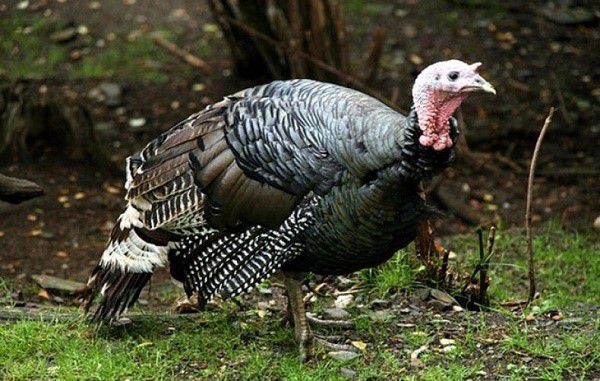

One individual per year can bring up to about 80 eggs, sometimes a little less or more, but only on condition that it is healthy and happy with life.
In this case, the number of units of the product removed will also depend on the health status of the bird, and in addition, on:
- conditions of her detention;
- the strength of the immune system;
- poultry house parameters;
- other factors.
In other words, the owner will receive exactly such turkey eggs (and of them turkey poults), which conditions he will create for his charges. And this will not only be about food and shelter, but also about reduced stress levels, enough physical activity, etc.
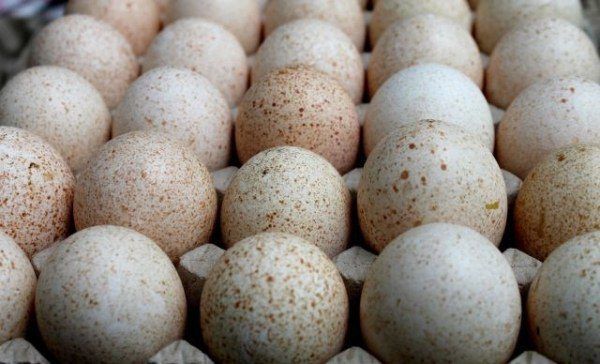

The turkeys will rush like this:
- with stable and comfortable living conditions every day;
- with somewhat difficult living conditions every other day;
- in unstable and uncomfortable conditions, they may rush rarely or not at all.
Remember, a sick bird cannot produce strong offspring.
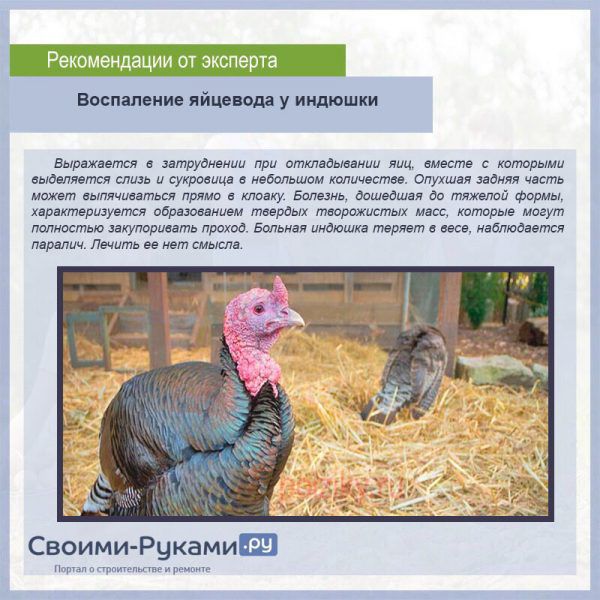

By the way, the weight of one unit of the obtained product averages 80-90 grams, which is much higher than the weight of the eggs of the same hens. Outwardly, turkey eggs differ not only in size, but also in pockmarked color.
Turkey nest
During the laying period, it is necessary to equip a warm roost or nest with clean and dry bedding for the laying hen, regularly feed the female with a nutritious complete diet with the addition of vitamins and fulfill other conditions of good maintenance:
- When the brood hen begins to lay, the air temperature in the house should be maintained within the range of +10 degrees. Lower temperatures will negatively affect the health of the offspring.
- In the general turkey poultry, two-tier nests are made for arranging a perch on the uneven bars. The height of each of them should be from 60 to 65 cm, and the width and length should be 50x70 cm. The bottom of the box is laid out with a layer of sand damped with ash.
- The nest is made from wooden crates only. Their bottom is covered with dry soil and well-dried hay.
There must be a feeder, a drinking bowl and a container with sand and ash near the nest. Birds usually do not leave the nest with eggs for a long time, refuse fresh air, drink and water. This is bad for their health. Therefore, turkeys should be brought to the trough, drinker and taken out into the fresh air several times a day.
To prolong clutch and increase egg production, eggs should be removed from the nest more often. To obtain offspring, only eggs obtained in the spring are used. In winter, keeping the young at home becomes more difficult.
Turkeys are distinguished by their love of cleanliness, so nest pollution can be one of the reasons for the termination of egg-laying. In this case, it should be cleaned and the old mat should be replaced with a new one.
Day-old chicks are placed in a separate box, at the bottom of which hay or large sawdust is placed. It is not recommended to use newspaper or paper, as babies can injure their paws. In the first week of life, chicks need round-the-clock lighting and an air temperature of +35 degrees. To do this, a lamp is attached to the box, which will give light and heat. Young growth should be protected from drafts.
Bird features
Unlike chickens, a turkey is a very capricious and demanding bird to care for, so not every breeder will be able to achieve maximum productivity. Knowing how to observe the living creatures, you can accurately plan egg production and hatching of young animals. At what age and how does this important process take place?
Depending on the breed, turkeys enter the time of maturity at 7-8 months of age, although there are examples when they rushed 150 days old. Professionals argue that early egg production does not mean good product quality. Most often, such specimens are very small and with various defects.
No matter how much the process begins, its activity depends on the physiological lines of the species. Broiler breeds will not lay before laying hens. By the way, early maturity is an inherited factor.
The quality of the product is often influenced by the temperature and light conditions in the room. Lack of heat and light slows down the bird's internal clock. Optimally selected conditions will allow you to accelerate fertility without any problems. However, a sharp increase in the day and the permissible degree will negatively affect the physiological characteristics of the young.
When do turkeys start laying at home? The process coincides with the calendar spring - March and mid-April. By this period, the body has already matured and is fully ready for performance. With each season, the birds produce fewer eggs, so after three years it is recommended to change the laying hens.
Turkey eggs - benefits and harms
The product obtained from a turkey has its own characteristic properties, which can be both useful and harmful.
The beneficial properties of turkey eggs include the fact that the product is rich in vitamins and minerals:
- vitamins E and A are beneficial for beauty and health;
- phosphorus and potassium are necessary for the strengthening and health of teeth, hair, bone tissue;
- sodium normalizes the body's water balance;
- B vitamins relieve fatigue and normalize sleep;
- potassium strengthens blood vessels and heart muscle;
- iodine is necessary for the activation of mental activity and good functioning of the thyroid gland.
In terms of nutritional value, turkey eggs are second only to quail eggs. The balanced set of vitamins and minerals included in the turkey product normalizes metabolism in the body and strengthens the immune system. A raw egg is good for the stomach. It envelops and protects the mucous membrane from acidity. Even the nervous system will start working well if you eat turkey eggs. When using them, the possibility of allergies is minimal, so turkey testicles are practically safe for people prone to allergies and small children.
It is not recommended to include turkey eggs in the diet for the following pathologies and conditions:
- high cholesterol;
- the use of food diets and the presence of excess weight;
- individual intolerance to the body of protein or yolk;
- kidney and liver problems.
It is recommended to buy the product only with whole shells and from trusted farmers or in stores, since eggs can be a source of Salmonella.
Application and storage
On the farm, this delicacy product is used in the same way as chicken eggs. It can be used to cook fried eggs, omelets, a variety of salads and delicious desserts. Before eating, the eggs are boiled in water for ten minutes. They can be used to make dough and soufflé base.
Cosmetologists recommend including the product in masks for hair, body, face.
The shell of such testicles has a loose structure, so various odors can easily penetrate through it. In this regard, eggs in the refrigerator should be isolated from other foods, especially from those with strong odors. These can be citrus fruits, onions, garlic, spices, fish. So that the smell does not penetrate the eggs, they are treated with a solution of linseed, sunflower oil and paraffin.
Nutritionists recommend using no more than one turkey egg per day.
Turkeys are quite unpretentious birds, so even a novice poultry breeder can keep them at home.
Providing birds with comfortable living conditions, a clean poultry house, a sufficient amount of food and walks, you can get quality meat, healthy eggs and healthy offspring from turkeys.
The beginning of egg production
Egg production is associated with the physiological characteristics of birds, with the puberty of turkeys. In individuals of different breeds, maturation occurs in different ways. The courtyards that deal with turkeys need to know at what age the turkeys begin to rush.
Experts say that in heavy turkeys, puberty occurs at 8-9 months. Females can make their first clutch at the age of 9-10 months. Lightweight and egg-producing birds develop faster. Their growing up period is 7-8 months. They begin to rush from 8-9 months of age:
- during puberty, the pituitary gland begins to function actively. It releases hormones that promote the development of reproductive organs in birds. The left ovary increases in size, eggs mature in it. They are enclosed in a dense follicle membrane. When the cell matures, the membrane bursts, the cell passes through the oviduct. The ovum is the yolk in which nutrients are concentrated. The right ovary of a turkey is atrophied;
- the functions of the oviduct develop. The cells of the mucous membrane begin to secrete secretions. Muscles propel the yolk along the oviduct: the cell spirals downward. Passing through the tube, it collects a secret that forms a protein. It has a liquid or viscous consistency;
- a dense protein wraps around the cell in the isthmus of the oviduct. Here, the formation of the egg shell takes place. It is thin and elastic;
- from the isthmus, the cell enters the uterus. Crystallization of the elastic shell occurs in it: a shell is formed. Crystals are represented by salts of calcium, sodium, phosphorus and other minerals;
- the formed egg leaves the uterus through the vagina, which has an exit into the cloaca;
- the exit of the cell gives a signal to separate the next egg from the follicle. The cycle of egg formation is repeated;
- to form a full-fledged turkey egg with a normal shell, the female needs 26 hours.
The first clutch is not distinguished by high rates. The eggs are small, the yolk is depleted in nutrients. They are not used for incubation, but they can be eaten. After a week, the turkey begins to produce full eggs. Samples are of medium size with smooth and clean shells.
The turkey should be prepared for egg production. She is prescribed a special diet that contributes to the normal development of the reproductive organs. The female receives 350 g of feed. It is recommended to study the following diet (for 10 heads):
- the basis is boiled potatoes; it is given 1.5 kg;
- corn, barley and grains of cereals are introduced - 900 g;
- cottage cheese - 30 g;
- 300 g each give wheat and barley bran;
- 400 g - vegetables that are rich in carotene: carrots, beets, pumpkin;
- minced meat or fish - 10 g;
- chalk - 30 g;
- bone meal - 25 g;
- table salt 15 g;
- once every 2 weeks, it is recommended to water the livestock with a solution of potassium permanganate.
The turkey should not make the first clutch earlier or later than the due date. With early clutch, productivity will be low, eggs are small. If the turkey reads to lay late, then the eggs will be large, but the number of them will not correspond to the norm.
It is recommended to study the physiological characteristics of the breed in order to achieve the timely onset of puberty in birds. The following breeds of turkeys are most in demand among the courtyards:
| № | Helpful information |
| 1 | bronze North Caucasian turkeys - puberty is observed at 9-10 months |
| 2 | Moscow bronze - 8.5-9 months |
| 3 | white North Caucasian turkey begins to rush at 8-9 months |
| 4 | females of the white broad-breasted breed carry out the first clutch at 9.5-10 months |
Until the indicated period, the layers are kept on a daylight period of no more than 10 hours. Fermented milk products are not added to the mash. Potatoes, peas, corn are removed from the diet. These products stimulate sexual development in birds.
When keeping turkeys at home, certain sanitary standards are maintained. Birds are placed on a clean bedding, the room is kept at an air temperature of 22 C, humidity 60%. Ventilate the room regularly. They monitor the cleanliness of the feeders and drinkers.
Signs of imminent productivity
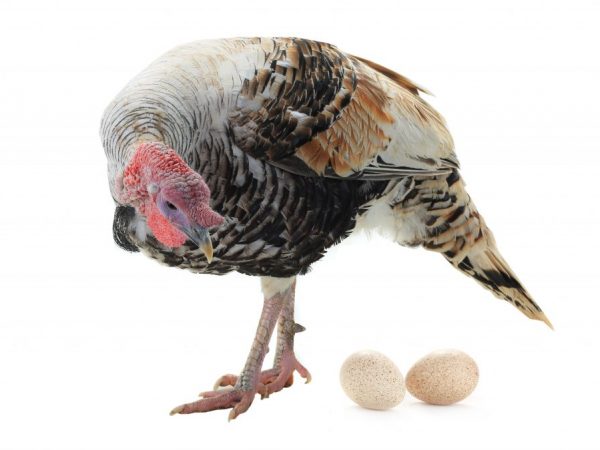

The behavior of birds will tell you about the approaching mating season.
An attentive owner is obliged to keep the livestock in excellent conditions. Before an increasing clutch, the bird radically changes its behavior, so you can quickly identify the laying hen.
- Retires. If the "young lady" is looking for a quiet place, then this is an important sign that the natural process is close.
- Arrangement of the nest. If the turkeys begin to rush, then the space is preliminarily prepared. Collect sticks, fluff and put on the bottom of the box.
- Rare walks. The individual sometimes goes out to frolic and is constantly indoors.
Farmers who notice such objects in pullets understand that the onset of the mating season is imminent. In this case, you need to help prepare the nest. For large birds, two-tier structures on uneven bars are best suited, the average size of the box in centimeters:
Professionals recommend not to save money and use wooden boxes. The bottom of the containers is covered with a thick layer of sand and ash. Top with a soft bedding of well-dried hay.
Turkeys rush to nests that already contain eggs. Experienced farmers prefer to leave the first copy in the box. Such blende stimulates females to willingly put down the next “food”. In order not to be mistaken, a mark is made on the shell with a marker.
To hatch chicks in birds of this species, the body temperature of the expectant mother increases to 42 degrees. How many eggs can fit in one turkey? On average, from 12 to 15 pieces, but not everyone succeeds in ripening efficiently and evenly. Those located on the edge will be colder than the central ones, so the female “mixes” the clutch almost 50 times during the day.
Remember that a one year old bird is not the best choice for a brood hen. To begin incubation, professionals prefer females between two and four years of age. Such individuals are less fearful and impulsive, therefore they sit out the clutch to the end.
An egg that was laid at least 10 days ago is taken as raw material. With each subsequent day, the material gradually loses its viability. Use only fertilized specimens tested with an ovoscope.
Every day, the bird is removed to eat and stretch its legs. The clutch should not be cooled, so the mum's time should be monitored, and after 30 minutes the female is seated in the nest. How long does incubation take? The chicks are hatched after 28 days, but within a day they are already starting to check for the presence of hatching specimens.
Turkeys should not be allowed on the nest in the "lady", although there have been cases when males tried to incubate eggs. The room should be warm and dry with minimal noise levels. Often, elimination is delayed for several days, but the mother patiently lasts until the end.
So that the turkey does not stop rushing, you need to properly organize the diet. Poultry with insufficient mobility are prone to obesity, and the deficiency of nutrients will immediately affect the quality of the product. The species requires more vitamins and proteins than chickens.
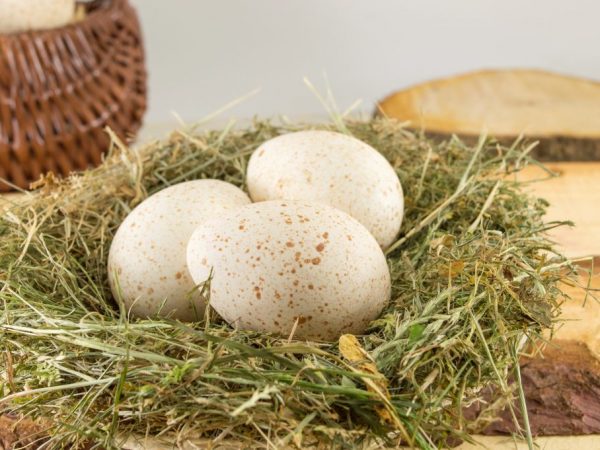

You need to feed your turkeys correctly
Turkeys are fed three times a day. In the morning and in the afternoon, they give wet mash with the addition of chopped grass, and at night they prefer to eat whole grains. Special compound feed is used both as an additive and as a separate dish.
In order for the birds to rush well, sprouted cereals, yeast and mineral supplements with vitamins of group B are introduced into the menu. It is very useful to dilute the diet with root vegetables and grass flour. To improve egg composition, farmers recommend open grazing in the summer.
If the bird carries it every day, then it is necessary to include from 3 to 10 grams of cottage cheese in the menu. Chalk, table salt and bone meal are required throughout the year. The lack of trace elements will immediately affect the quality and quantity of products.
By the way, boiled root vegetables have a positive effect on the health of the bird. Potatoes allow the egg to grow, so farmers add up to 120 grams per day. It is better not to abuse meat and fish waste.
Cyclicity of masonry
Egg production in turkeys differs by month. It has its own cycle, which is not as long as that of a chicken. Chickens can lay eggs all year round if comfortable conditions are created for them. Weariness stops during the shedding period. Layers of the egg direction can produce a lot of eggs, up to 350 pcs. in year.
Podvortsy is interested not only when the turkeys begin to lay eggs, but also how many months the clutch lasts. Turkeys are not very productive. During molting and in winter, they do not rush. The length of the masonry cycle depends on the breed. On average, turkeys rush for 4-5 months in a row. After this period, there is a pause. It is required for the body of the females to recover.
Poultry farmers often discuss issues related to the productivity of turkeys when they start laying at home. If the turkey poults appeared in March, then their egg production may already develop in November, but the courtyards often carry out activities to postpone the period of maturation of the birds.Turkeys don't rush in winter. The first clutch may occur at the end of February, at the beginning of March.
Productivity and cyclicity are inherited by individuals. Moreover, the bearer of this trait is the male. The cyclicality of laying in some breeds of turkeys:
- bronze North Caucasian turkeys - 5.5-6 months; turkey egg weight 85-95 g;
- Moscow bronze; turkeys lay eggs for 5-6 months; weight 80-85 g;
- white North Caucasian turkey - 5-6 months; laying hens produce eggs weighing 80-85 g;
- the cyclicity in the female of the white broad-breasted breed lasts 5.5-6 months; weight 95 g.
If the first clutch falls at the beginning of March, then the productivity of layers lasts on average until August. The number of eggs depends not only on the characteristics of the breed, the conditions of keeping the poultry, but also on the month of productivity. Experts give average data:
- a month - a turkey can bring 12 eggs;
- 16 pcs;
- 16 pcs;
- 14 pcs.;
- 12 pcs.;
- 10 pieces.
The female does not clutch every day. In the first days of productivity development, an egg is formed in 2-3 days. In the future, the female can be carried daily. On average, a turkey clutches once every 2 days. The most productive months are 2-3 months of the cycle. In August, birds begin to molt.
The pen change lasts until October-November. In winter, home-kept turkeys do not lay eggs. At large poultry farms, conditions are created to increase the cyclicality of individuals. Females can lay in the winter as well. Average productivity in females of various breeds:
- bronze North Caucasian turkeys -80 pcs. per season;
- Moscow bronze - 100 pieces;
- white North Caucasian - 100 pcs .;
- wide-breasted white - 85 pcs.
The courtyards discuss on the forums what productivity cycle can be considered the norm, how to determine it if females rush 2-3 times a week. Experts say that turkeys exhibit not only seasonal, but also intraseasonal cyclicality.
Igor Nikolaev
In high producing turkeys, the cycles last for 5 days. There is a break of 2 days between them. Individuals of meat breeds with low egg production have a cycle of 3 days. This is followed by a pause of 6 days. By the end of the season, the duration of the cycles gradually decreases, the pauses increase.
Poultry farmers note that the egg production of turkeys changes with age. Young layers show maximum productivity in the first year. In the future, it decreases by 15% annually. Egg production in turkeys lasts 4 years. By the age of 5, the clutch is minimal. It is proposed to study the following indicators:
- year turkey carries 85 pieces. per season;
- 80 pcs;
- 75 pcs;
- 60 pcs.;
- 30 pcs.
At poultry farms, layers are in demand only in the first year of egg production. In the future, the herd is culled for meat. At home, courtyards can withstand layers of up to 3-4 years. In the future, poultry farmers determine how many eggs the turkeys are laying, whether it makes sense to keep them for a longer time. In adults, fertility is low, it is impossible to get offspring from them.
Turkeys are kept for the sake of obtaining tender dietary meat. Today, many breeds and crosses have been bred, which are growing rapidly and in just a few months give a carcass weighing 10-14 kg. But the egg production of a bird is equally important. The more the female lays full-fledged eggs suitable for incubation, the more young animals can be obtained for growing for meat. The egg production of turkeys depends not only on the breed, but also on the conditions of keeping and feeding.
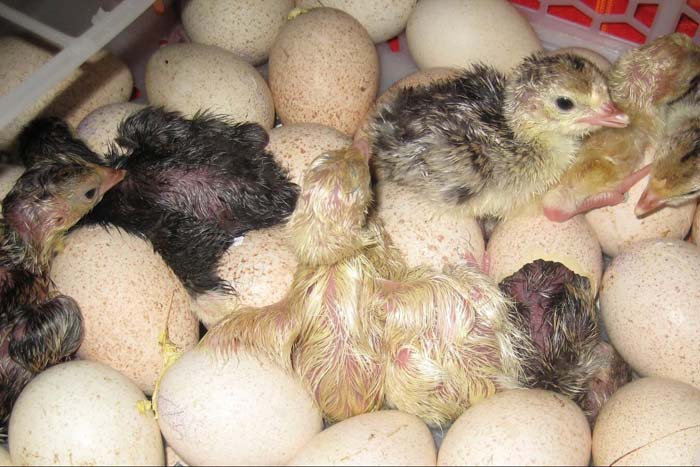

Reproductiveness
The homeland of the species is America, the first representatives were brought to Europe by the Spaniards. Large birds have taken root at home and delight their owners with delicious, dietary meat. How often and how many eggs does the turkey lay?
Depending on the breed, each female in one breeding season brings from 75 to 125 pieces, although there are species that yield 200 copies.The product is covered with a creamy white shell with small dots and weighs approximately 80-90 grams. The younger the "lady", the lighter the protective layer.
In the spring and late autumn, turkeys produce 1 egg each over a period of one or two days. If the farmer complies with all the requirements for keeping, then the birds consistently give a specimen per day. It should be remembered that the species does not have year-round production.
To ensure high-quality fertilization of products, it is necessary to think over the ratio of heads. One turkey is needed for every ten females. Mating occurs up to three times a week. Since males are much larger and more aggressive than young ladies, the process must go without injuries: before the mating season, the boy is recommended to shorten his nails.
How many days are females ready to hatch? When turkeys begin to lay eggs actively, it is a sign of motherhood. A tender bird will react painfully to extraneous sounds and noises. We advise you not to disturb the "lady" on trifles and do not look into the nest while she is sitting in it.
How turkeys rush
The female turkey begins laying eggs when it reaches puberty. It is important that environmental conditions are favorable for this. The egg production indicated in the description of the breed may change downward if the norms and requirements for keeping and feeding are not observed.
How many eggs does a turkey lay per year
Depending on the variety, a female turkey lays from 60 to 140 eggs per year. The most egg-laying breeds bred in our country are:
- North Caucasian bronze - up to 140 pieces per year;
- wide-breasted white - 120 eggs;
- white Moscow - 110–120 pieces;
- Virginian, or Dutch white - 110 eggs;
- Tikhoretskaya black - about a hundred eggs.
These breeds are classified as light or medium type turkeys, reaching a live weight of 9-15 kg.
Heavy turkeys, gaining a mass of 20-25 kg, lay only 50-80 eggs per year.
How often turkeys rush
When a turkey lays eggs for the first time, it lays once every 2-3 days. As they grow older, the frequency of laying increases to daily or every other day.
Each egg weighs from 70 to 95 g, it is of the correct "egg" shape - with a blunt and sharp end. The shell is dense, painted in a light coffee shade with reddish-brown small specks.
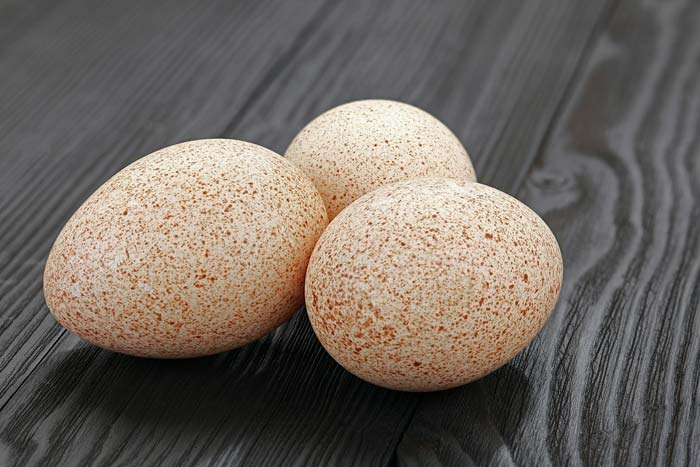

In mid - late summer, when the breeding season is declining, the turkey rushes at intervals of 2-4 days.
How many years does it lay eggs
Female turkeys lay eggs for up to 8 years, but turkeys are used on the farm for up to 5 years. After 5 years of age, egg production falls and is 50% of the usual. The peak of productivity occurs at the age of 2-3 years.
How to tell if a bird is about to lay eggs
A turkey usually lays an egg early in the morning. Coming to the barn for the morning feeding, the poultry farmer already finds a warm egg in the nest.
It is possible to determine that a young turkey is preparing for egg-laying by the following signs:
- the bird sits on the nest, and sits on it for a while;
- the female begins to "nest" - pulls fluff and twigs into a secluded corner;
- does not go for a walk, hides from the herd;
- if you take a turkey in your hands and feel the belly and pubic bones, the distance between them will be 3-4 fingers.
One of the signs of an imminent start of egg-laying is the mating of turkeys. Experienced poultry farmers believe that covering the female with a turkey stimulates the start of clutch.
Reproductiveness
Reproduction is annual, it is influenced by the age of the laying hen. So, they are most egg-laying during the first year of life. Then this indicator decreases: in the second year by 40%, in the third - by 60%.
As a result, turkeys are not kept for more than three years, they are sent for slaughter.
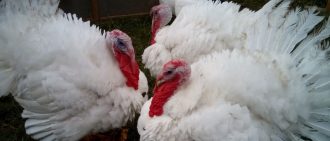

How many eggs can be obtained from an individual in one clutch
In spring and late autumn, turkeys lay one egg a day or every other day. Some birds can carry more at this time, but this fact is rather an exception.
If you create optimal conditions for keeping and feeding the hen, the bird will produce one egg per day.
After the egg is placed under the hen for incubation, it lays for another 1-3 days and can produce about 5 eggs... In this case, the laid eggs are removed. You can get 50-75 eggs per season.
How many eggs does a turkey lay per year
Depending on the breed, the laying hen lays 118-125 eggs in one year. This quantity is influenced by health and living conditions. Some breeds bring up to 160 pieces.
To breed hens with high egg production, they are selected 50 days after the start of clutch. At the same time, the one that carries more eggs is suitable for incubation. The rest are sent to slaughter.
How many years turkeys rush
Laying hens are laid every year, but in the third year egg production drops (up to 60%), so they are not kept for longer. Nevertheless, with properly created conditions, competent nutrition, health care, birds continue to rush even in the 4th year of life.
Impact of health status on egg production
Turkeys rush well, only with good health. In addition to the obvious diseases that affect the behavior and appearance of the bird, there are hidden problems that affect egg production. These are vitamin deficiency, external and internal parasites.
Avitaminosis
Lack of vitamins in winter and early spring directly affects egg-laying, pushing it back until the bird starts to graze. Most often, a turkey locked in a barn suffers from a lack of vitamin C and D.
Vitamin C is found in greens and fresh vegetables; it is not in grains and animal feed. To replenish the vitamin deficiency in the body, turkeys are fed hay in the form of grass meal or cutting. Most vitamin C is found in legumes and nettle hay.
Turkeys are also given sprouted grains (oats, wheat, barley), 15–20 g per head per day. Sprouts of cereals are rich not only in vitamins, but also in microelements. It helps to preserve the supply of vitamins in the body by giving fresh vegetables: cabbage, carrots, pumpkin. Sometimes the bird is given a rosehip decoction.
Vitamin D is produced in the sun, with a lack of it, the body absorbs calcium poorly, which affects the strength of bones and eggshells. In addition to organizing winter walks, turkeys add an oil solution of vitamin D to their food.
In addition to introducing nutrients in a natural form into the diet, turkeys are given a premix or liquid water-soluble complex vitamins.


Parasites
Poultry can be annoyed by ticks, lice, fleas and worms. With a weak infection, the appearance of the turkeys remains almost unchanged, but the bird will not rush. Hens especially suffer from lice and ticks, since a turkey sitting on eggs cannot get up from the nest and go swimming in the sand.
To prevent infection with parasites, a month before the start of the breeding season, the poultry house and the birds themselves are treated. Anthelmintic drugs are given against worms (Alben, Panakur). For lice, the livestock is treated with a special powder containing pyrethrum. The barn is whitewashed and cleaned.


General state
Before the start of the breeding season, turkeys are examined for nutritional status. If the bird is overweight and the body fat is clearly felt, it is put on a diet, reducing the amount of grain feed and increasing the proportion of vegetables and coarse food.
If the turkey is depleted, the diet should be revised in the direction of increasing its nutritional value, ideally, it should be switched to compound feed for adult turkeys.
How to put a turkey on eggs
As a rule, having laid one and a half to two dozen eggs, the female prepares herself to sit on the nest. Plucking the fluff from the chest will be a signal that the turkey is ready for the brooding process. The bird covers the bottom of the nest with down.
While the turkey is laying, eggs are collected daily and stored in a cool place in egg cassettes in an upright position (blunt end up).
When the hen has prepared the nest and sat on the bed, real eggs are laid at nightfall.From 13 to 18 pieces are placed under one hen.
When the females sit down to incubate, the turkey becomes bored. So that he does not lure his friends from the nest, he can also be offered to hatch a dozen chicks. Very often turkeys turn out to be excellent hens. They do not lay eggs only under the bird of heavy breeds, with its weight it presses the clutch.
If the turkey did not want to incubate, it is better to place it in another room during incubation so that it does not interfere with the females.
> How many days sits on eggs
The turkey sits on eggs for 26-29 days. Turkey poults from small eggs begin to hatch earlier, from large ones - later.
Can a male hatch offspring
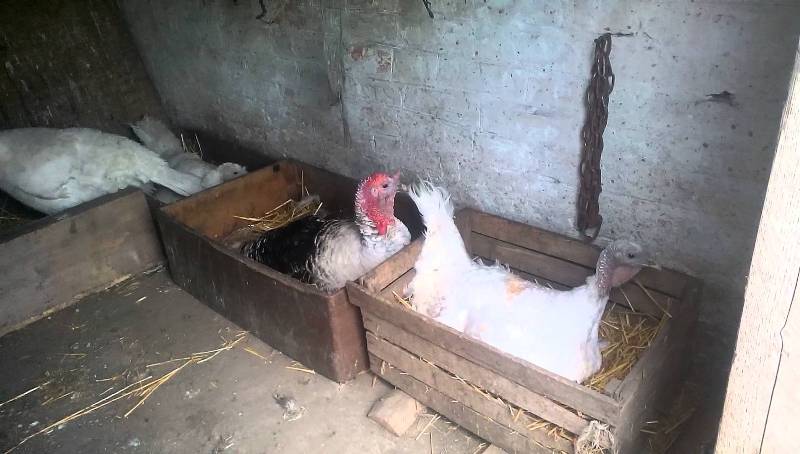

A turkey is sitting in the second nest. The eggs will be peeling soon!
The turkey has all the qualities for incubating its offspring. He has a strong defensive instinct, he has a thick feather coating. Turkeys, in the event that there is an insufficient number of females, or when there are too many eggs, are able to incubate a clutch.
In order to force the male to play the role of a brood hen, several eggs are laid in the nest, the turkey is seated and covered with a basket so that it cannot stand up to its full height. If, after several days, the turkey remains on the nest without a basket, then he is able to sit on the clutch. If a bird leaves the nest, then it is not suitable for the role of a brood hen.
Video about a hen turkey
Males that sit on the nest have their own distinctive features from females:
- Since they are larger and weigh more, eggs of other domestic birds are not placed in the nest, and turkey eggs are chosen stronger.
- They are more aggressive in nature, so they do not like the actions of the house in relation to him and the nest. To check the nest, the turkey should be held firmly with its wings wrapped around, quickly adjust the nest and then sit down while the bird is confused. Next, you need to quickly leave the room.
- Turkeys can carefully look after hatched chicks until they are seen by other males.
Useful Tips
Turkeys should be kept in spacious, light, warm and dry poultry houses. Adult birds tolerate the cold well and can walk outside in winter if there is no wind and the temperature is not lower than -10 degrees. But dampness harms these birds, turkeys catch colds from damp litter and may die.
Next to the nest, you need to put a feeder, a drinker and a container with sand for "bathing". A caring hen will not want to move far from the eggs, so food and water should be in her field of vision. If the bird has stopped leaving the house, it is recommended to take it out of the barn for a walk at least once a day.
In order to obtain a fertilized egg from heavyweight crosses, artificial insemination is used.
Turkeys weighing 22-25 kg injure females, tearing their backs into the blood. At home, in order to get large and fast-growing turkeys, a light male is selected for females of heavy breeds. Before mating, his claws are filed so that they are not sharp, and the females are sometimes put on blankets made of dense fabric.
Turkeys give large tasty eggs, from which you can get young animals for further breeding for meat. In order for the bird to begin to rush, it is necessary to provide it with suitable conditions, equip the nest and organize a full-fledged fortified food.
Possible problems
Sometimes the brood hen will drop the nest in the middle of the cycle. There may be several reasons for this:
- a turkey lures the female for a walk;
- the bird is uncomfortable in the nest - damp litter, parasites pester, it is too hot;
- food and water were not supplied to the turkey near the nest, which is why the female is forced to leave the clutch for a long time;
- individual characteristics of the bird.
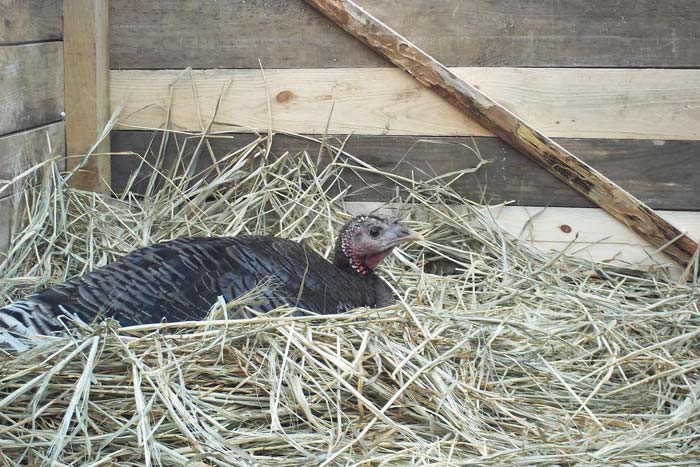

As a rule, most turkeys hatch well, but caring mothers are highly valued. A good brood hen, even when it stops laying itself, can hatch chicks not only turkeys, but also chickens, guinea fowls and even ducks.
Often turkeys do not rush during the high season, the reasons for this may be the following:
- too hot or cold (above +30 degrees or below +10);
- the length of daylight hours in the house is less than 12 hours;
- the bird is infected with parasites;
- the room is damp, poor ventilation;
- there are too many males in the herd and they tire the turkeys with courtship.
With a high level of stress and crowding (there is more than 1 bird per 1 sq. Of floor), turkeys also suspend egg-laying.
Formation of the parent herd
To obtain hatching eggs, it is necessary to form a parent flock. Its numbers are different. The number of females in a herd depends on the breed. For heavy breeds, there are 6 females per turkey. If individuals are of average weight, then the number of females is increased to 10 heads. Birds of light weight are distinguished by good activity and fertility. There can be up to 15 females per male:
- for the parent flock, individuals with excellent performance indicators and high conformation characteristics are chosen. Birds shouldn't have any flaws. All parameters must comply with the norms generally recognized within the breed;
- pay attention to the physique, plumage, shape of the neck, head, limbs;
- individuals who have previously suffered from any infectious diseases are discarded;
- choose birds with a calm temperament. Turkeys are distinguished by their emotionality. Leadership qualities are genetically inherent in them. They are always ready to fight other males in the herd. Aggressive turkeys are not accepted into the parent flock.
Crossbreeding is usually carried out within the same breed, but courtyards are experimenting. To obtain the desired color and a certain indicator of productivity in a bird, birds of various breeds are used for the breeding herd. Black Tikhoretsky turkeys have dark plumage. Their egg production is well developed, but the weight of a large individual does not reach.
On the contrary, the white Moscow line has good meat qualities. Podvorts often cross both breeds. As a result, individuals with white plumage with black specks are obtained. Turkeys look beautiful. They are able to rapidly gain body weight.
When forming a parent flock, it is necessary to pay attention to the family ties between birds. Crossbreeding between relatives is not allowed. The embryo in eggs will develop abnormally. If the bird family is improperly compiled, the offspring are noted for deformities: the chicks are discarded.
How does mating work?
To determine how turkeys mate, it is necessary to consider the structure of the genital organs of birds. The genitals of turkeys consist of the testes, appendages, the vas deferens and the copulatory organ from which the seminal fluid comes out. The sperm mature in the testes. This is a paired organ. During puberty, it increases in size. In heavy breed turkeys, the testes can weigh 70 g.
The bird's appendages are not developed. Sperm move along the vas deferens, bypassing them. The vas deferens is a thin, winding tube. When the testes begin to work hard, the vas deferens expands, its walls become thicker. Spermatozoa enter the copulatory organ. It has access to the cloaca. In turkeys, it is represented by a slight thickening, similar to a small onion. Through it, the semen flows to the female.
The reproductive organs in females are represented by the ovary, in which the eggs are located: they are attached to the walls of the ovary by the leg. Blood vessels pass through it, which nourish the cell. When the cell matures, it detaches from the ovarian wall and travels into the oviduct. There is a funnel on the oviduct. Its muscle walls capture the seminal fluid and carry it to the ovum. Fertilization occurs.
Further, the cell passes through the oviduct. White is formed around the yolk. In the isthmus of the uterus, the formation of external membranes occurs. In the uterus, the membranes become hard.In this section, the egg is finally formed. It goes out through the oviduct: the oviduct has an outlet into the cloaca.
Mating turkeys
Mating is a difficult process for a turkey. This is especially true for males of heavy breeds. They have a lot of weight and volumetric plumage. The male climbs onto his back to the female. He tries to bring his copulatory organ to the turkey cloaca. People say that a turkey tramples a turkey. Mating takes place.
Igor Nikolaev
The female patiently sits flat on the ground and waits for the end of the process. The next egg that the hen lays will be fertilized. One mating will be enough for a turkey to produce up to 10 eggs. Only the first 6-8 eggs are taken for incubation. The rest, as a rule, have pathologies.
The courtyards are often discussed on forums about how to mate individuals. Not all males can trample females. Turkeys are seated on turkeys, but males have no desire and interest in the female. This does not mean that the turkey has any deviations. It's just that, according to poultry farmers, not all males are given the right approach to females.
It is recommended to keep young and more experienced turkeys in the same enclosure so that the turkeys pass on their experience to the younger generation. Turkeys are allowed into this enclosure to mate with males.
Some males may not like the female. If the laying hen has bald patches on the plumage, growths on the skin, on the head, then the turkeys drive away such birds. They don't like them. To make the males more active, it is recommended to keep them separate from the layers. The male is launched only during the period when it is necessary to obtain hatching eggs.
Artificial insemination
When a turkey tramples on a female, he can injure her. The turkey has difficulty getting to its feet. Her body weight is not as large as that of a male, her back, wings and limbs are weaker. An injured bird cannot lay and hatch offspring, so it is often culled out. To preserve the maternal livestock, they resort to artificial insemination:
- select a manufacturer turkey. It should be a purebred male without any flaws;
- contain it in a separate aviary;
- turkey is used 3 times a week;
- they give him a massage of the abdomen, turn the cloaca upwards, find a copulatory organ through which sperm comes out;
- in a minute, a good inseminator can use 30-40 males;
- at home it is difficult for courtyards to carry out the procedure. It is recommended to use the help of a veterinarian or inseminator;
- using a special device, semen is taken from him and stored in the refrigerator;
- before use, the liquid is diluted in distilled water, the semen is checked for activity and injected into turkeys;
- from a turkey at a time, you can get seminal fluid for fertilization of 20 females. The process is painless;
- fertilization is effective. The sperm is retained in the oviduct. The next 17 eggs will be fertilized. They are used for incubation.
Turkeys are prescribed a balanced diet, which necessarily includes carrots, pumpkin, potatoes, peas. Retinol or an oil solution of vitamin "A" is added to the feed. Vitamin improves the quality of semen. Pea mash stimulates the sexual activity of turkeys.
To get a good brood of turkeys in the courtyard, you need to prepare for this process. It is necessary to properly form a bird family or choose a good breeding turkey. Artificial insemination is recommended. The technique is more effective. Natural fertilization of turkeys is not always successful.
How turkeys stomp a turkey and dance Title How turkeys stomp a turkey and dance Watch time 1:44 Title turkey prelude ... very funny) Watch time 3:04 Title Turkeys mating Watch time 3:22
Igor Nikolaev Author's rating Article author Igor Nikolaev Articles written 997
Things to Remember
In order for the turkeys to rush, many farmers artificially stimulate their flocks by increasing the lighting and creating a warm microclimate in the house. Regular abuse of activation is dangerous for the health of the species, especially for young animals that have not reached the mature age of 7-8 months. The body does not develop properly, therefore, problems will begin to worry in the future.
Eggs are laid too early, there are many small specimens, the quality of the offspring will be low.

